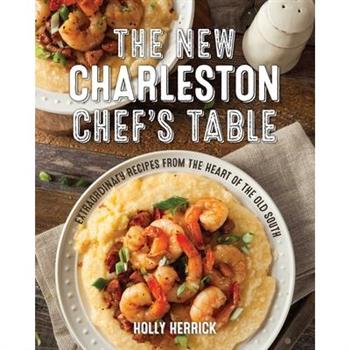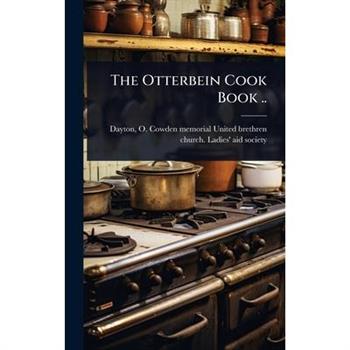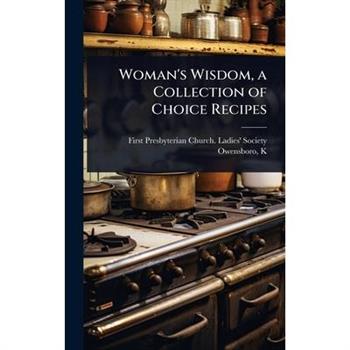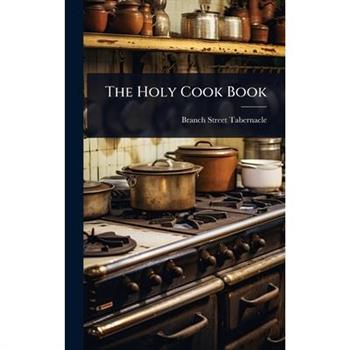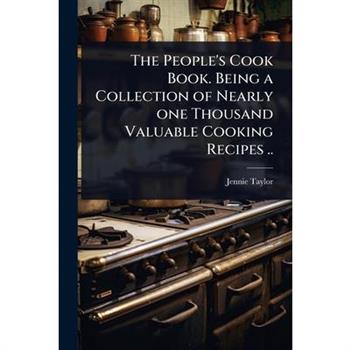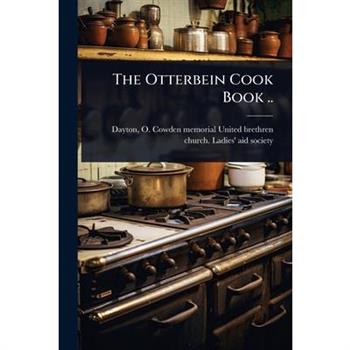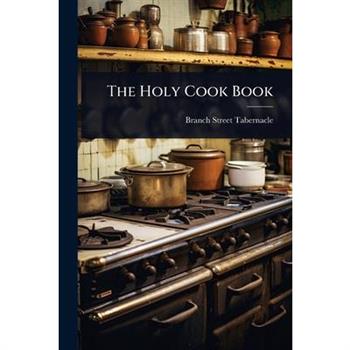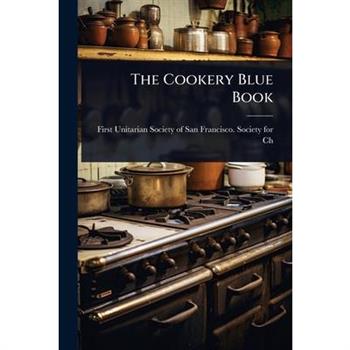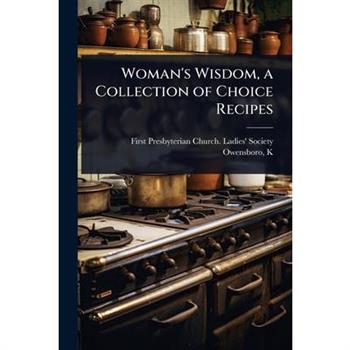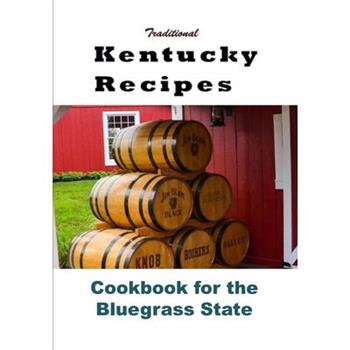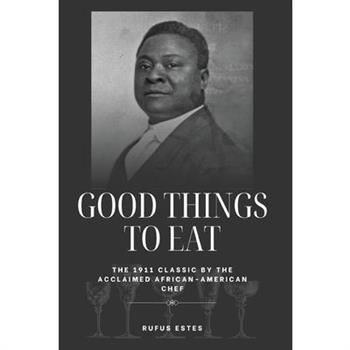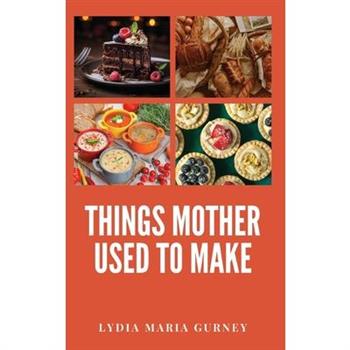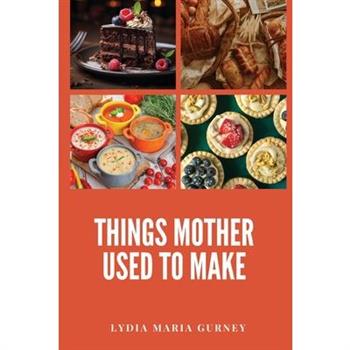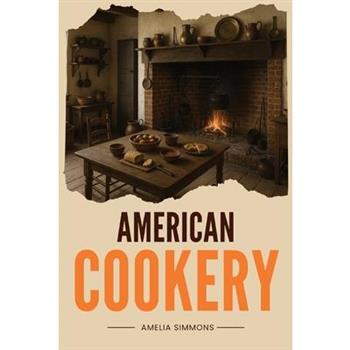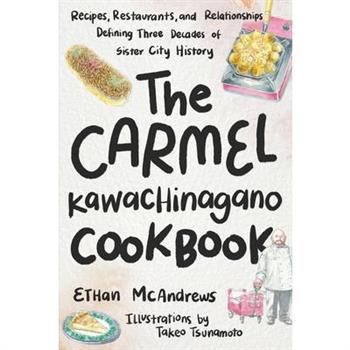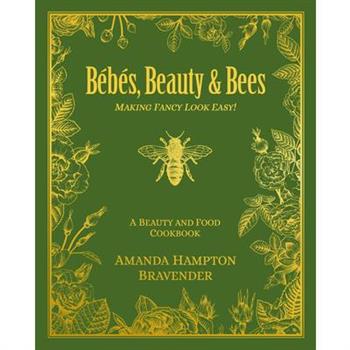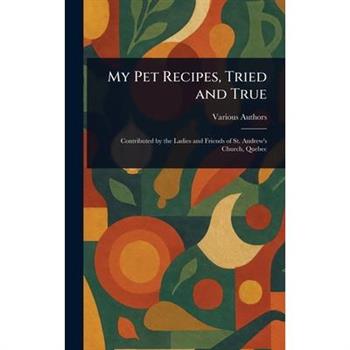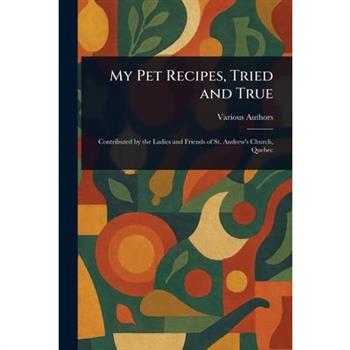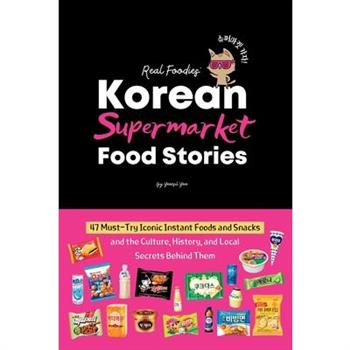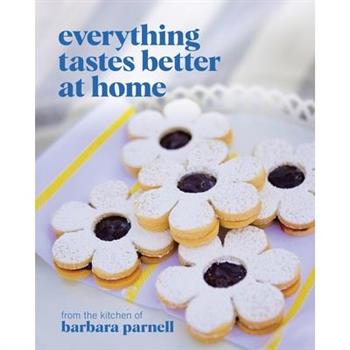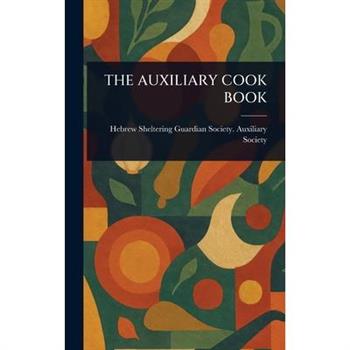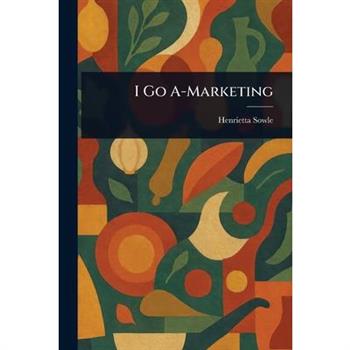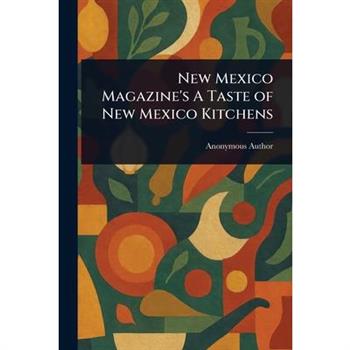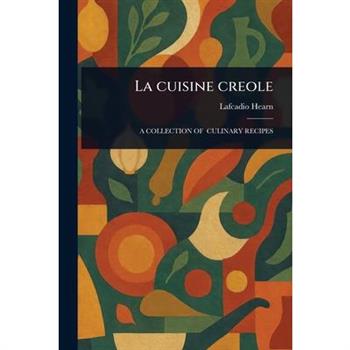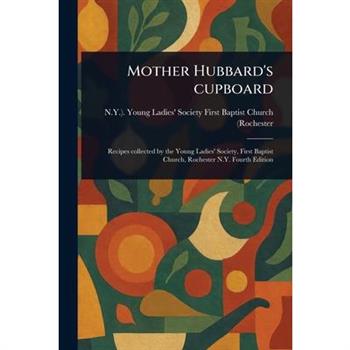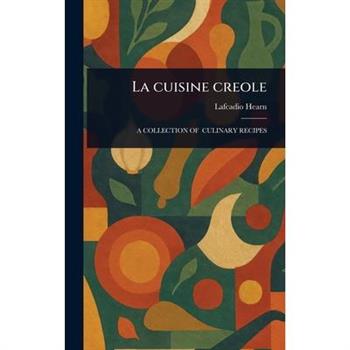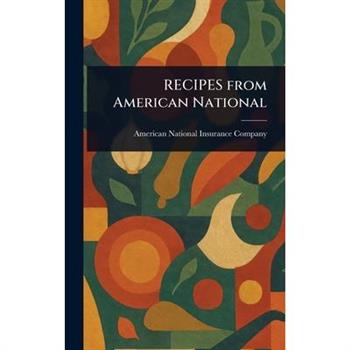Kate Aitken's Canadian Cook Book
From the 1930s to the 1950s, Kate Aitken was a role model for millions of Canadian women who listened to her national radio show, clipped her recipes from the Montreal Standard , where she was Women`s Editor, and purchased her books and pamphlets on everything from cooking and childcare to travel and etiquette. Kate Aitken`s Canadian Cook Book was first published in 1945 and became an instant bestseller.In Kate`s own words, the book is " a handy, inexpensive guide to healthful daily living. " Along with delicious recipes for appetizers, baked goods, canning, main dishes, salads, soups, and quick lunches and suppers, she provides a wealth of information on nutrition and helpful hints on cooking. Considered the " Martha Stewart" of her day, Kate Aitken`s practical recipes endure to delight Canadian families today.
The Laura Secord Canadian Cook Book
Canadian cuisine is recognized the world over as combining a unique array of fresh ingredients and a variety of cultural influences tempered by tradition. This third title in the Classic Canadian Cookbook series includes Canada's most beloved recipes-think Nanaimo bars, matrimonial cake, maple fudge, tourti臘re, fish cakes, bannock, and wild blueberry jam. Known as the first truly Canadian cookbook, this faithful replica of the original edition is essential for cooks anywhere. The plucky spirit of 19th-century Canadian heroine Laura Secord permeates this collection, which was sponsored by the Laura Secord Candy Shops and created by the Canadian Home Economics Association to commemorate the Canadian centennial in 1967. Inspired by our national history and identity, it was destined to become an instant classic. The regional and cultural diversity of Canadian cooking in the '60s is wonderfully captured in these recipes: o Fricandeau (a veal and pork loaf) o Malpeque Oyster Stew o Holubtse (Ukrainian stuffed cabbage rolls) o Glazed Back Bacon o Hot Cross Buns o Blueberry Grunt o Maplewood Doughnuts o Quebec Sugar Pie o Grape Jelly
The Five Roses Cook Book
In 1915, the Five Roses Cook Book was in daily use in nearly 650,000 Canadian kitchens - practically one copy for every second Canadian home. Here you will find a faithful reprint of this amazing book. " Enjoy the Five Roses Cook Book as a charming glimpse into the past, and as my grandmother did, as a friend and helper. " - Elizabeth Baird, food editor at Canadian Living Magazine
Girls Who Dish!
Within weeks of hitting the bookstores, the first Girls Who Dish! Cookbook became a national bestseller. In this eagerly awaited encore, the girls once more offered a feast of easy but impressive creations. From spicy Jumbo Prawns with Nutty Herb Sauce to Lemon Meringue Kisses, each page features new and tempting recipes.
A Year in Niagara
When renowned food writer Kathleen Sloan-McIntosh visited Canada`s world-famous Niagara region, she was so enchanted that she and her husband sold their house in the city and relocated to an old farmhouse there. Part cookbook, part wine guide, and part travel guide, this unique book tells the story of their first year in Niagara.
The New Charleston Chef’s Table
Immerse Yourself in the Eclectic and Growing Food Scene of Charleston! From roadside dives to upscale eateries, Southern to Chinese, Holly Herrick leaves no stone unturned as she winnows Charleston's restaurants down to her top picks. From fried chicken to shrimp and grits, The New Charleston Chef's Table delivers all the goods that make South Carolina's gem of a city such an exciting place to visit, live, and dine. And now you can recreate your favorite dishes at home! Come celebrate the tastes of Charleston.
The Oakland Souvenir Cook-book
"The Oakland Souvenir Cook-book: Tried And Found Good" offers a fascinating glimpse into early 20th-century American cuisine and community life. Compiled by the Ladies' Aid Society of the First Christian Church in Oakland, California, this collection features a diverse array of recipes reflecting the culinary tastes and traditions of the era. More than just a cookbook, it serves as a historical artifact, providing insights into the social fabric of Oakland and the role of women in shaping local culture.Each recipe, "tried and found good," promises a delightful culinary experience while offering a taste of history. This volume is a valuable resource for culinary historians, cooking enthusiasts, and anyone interested in the heritage of Oakland, California. Discover the flavors of the past and the stories behind the recipes in this unique souvenir cookbook.This work has been selected by scholars as being culturally important, and is part of the knowledge base of civilization as we know it. This work was reproduced from the original artifact, and remains as true to the original work as possible. Therefore, you will see the original copyright references, library stamps (as most of these works have been housed in our most important libraries around the world), and other notations in the work.This work is in the public domain in the United States of America, and possibly other nations. Within the United States, you may freely copy and distribute this work, as no entity (individual or corporate) has a copyright on the body of the work.As a reproduction of a historical artifact, this work may contain missing or blurred pages, poor pictures, errant marks, etc. Scholars believe, and we concur, that this work is important enough to be preserved, reproduced, and made generally available to the public. We appreciate your support of the preservation process, and thank you for being an important part of keeping this knowledge alive and relevant.
The People’s Cook Book. Being a Collection of Nearly one Thousand Valuable Cooking Recipes ..
The People's Cook Book, originally published in 1882, offers a fascinating glimpse into the culinary practices of late 19th-century America. Compiled by Jennie Taylor, this comprehensive collection features nearly one thousand recipes, reflecting the tastes and ingredients available to households of the era. More than just a collection of recipes, this book provides insight into the domestic lives of Americans during a period of significant social and economic change. Readers will discover a wealth of information on cooking techniques, food preservation, and household management. This volume is a valuable resource for culinary historians, cooking enthusiasts, and anyone interested in exploring the rich culinary heritage of the United States.This work has been selected by scholars as being culturally important, and is part of the knowledge base of civilization as we know it. This work was reproduced from the original artifact, and remains as true to the original work as possible. Therefore, you will see the original copyright references, library stamps (as most of these works have been housed in our most important libraries around the world), and other notations in the work.This work is in the public domain in the United States of America, and possibly other nations. Within the United States, you may freely copy and distribute this work, as no entity (individual or corporate) has a copyright on the body of the work.As a reproduction of a historical artifact, this work may contain missing or blurred pages, poor pictures, errant marks, etc. Scholars believe, and we concur, that this work is important enough to be preserved, reproduced, and made generally available to the public. We appreciate your support of the preservation process, and thank you for being an important part of keeping this knowledge alive and relevant.
The Cookery Blue Book
The Cookery Blue Book, compiled by the Society for Christian Work of the First Unitarian Society of San Francisco, offers a fascinating glimpse into late 19th-century American cuisine. This collection of recipes provides insights into the culinary practices and ingredients popular during that era. From classic dishes to regional specialties, the book showcases the diverse flavors that shaped American cooking. Originally published in 1891, this volume is more than just a cookbook; it is a historical artifact that reflects the social and cultural context of its time. Food enthusiasts, historians, and anyone interested in the evolution of American culinary traditions will find this book a valuable and engaging resource. Discover the tastes of a bygone era and experience the culinary heritage of San Francisco through the pages of The Cookery Blue Book.This work has been selected by scholars as being culturally important, and is part of the knowledge base of civilization as we know it. This work was reproduced from the original artifact, and remains as true to the original work as possible. Therefore, you will see the original copyright references, library stamps (as most of these works have been housed in our most important libraries around the world), and other notations in the work.This work is in the public domain in the United States of America, and possibly other nations. Within the United States, you may freely copy and distribute this work, as no entity (individual or corporate) has a copyright on the body of the work.As a reproduction of a historical artifact, this work may contain missing or blurred pages, poor pictures, errant marks, etc. Scholars believe, and we concur, that this work is important enough to be preserved, reproduced, and made generally available to the public. We appreciate your support of the preservation process, and thank you for being an important part of keeping this knowledge alive and relevant.
The Otterbein Cook Book ..
Dive into a culinary time capsule with "The Otterbein Cook Book," a fascinating collection of recipes compiled by the Ladies' Aid Society of the Cowden Memorial United Brethren Church in Dayton, Ohio, circa 1916. This charming cookbook offers a glimpse into early 20th-century American home cooking, featuring a variety of dishes that reflect the tastes and ingredients of the era. More than just a collection of recipes, "The Otterbein Cook Book" is a historical artifact, providing insights into the social and cultural context of its time. Discover the traditional techniques and flavors that shaped American cuisine, and enjoy a taste of history with every dish. Whether you're a seasoned chef, a history buff, or simply looking for a unique culinary experience, this cookbook is sure to delight and inspire.This work has been selected by scholars as being culturally important, and is part of the knowledge base of civilization as we know it. This work was reproduced from the original artifact, and remains as true to the original work as possible. Therefore, you will see the original copyright references, library stamps (as most of these works have been housed in our most important libraries around the world), and other notations in the work.This work is in the public domain in the United States of America, and possibly other nations. Within the United States, you may freely copy and distribute this work, as no entity (individual or corporate) has a copyright on the body of the work.As a reproduction of a historical artifact, this work may contain missing or blurred pages, poor pictures, errant marks, etc. Scholars believe, and we concur, that this work is important enough to be preserved, reproduced, and made generally available to the public. We appreciate your support of the preservation process, and thank you for being an important part of keeping this knowledge alive and relevant.
Woman’s Wisdom, a Collection of Choice Recipes
Discover a culinary snapshot of 19th-century America with "Woman's Wisdom, a Collection of Choice Recipes," compiled by the Ladies' Society of the First Presbyterian Church in Owensboro, Kentucky. This charming collection offers a glimpse into the kitchens and tastes of a bygone era, featuring a variety of recipes reflecting the culinary traditions of the time. More than just a cookbook, "Woman's Wisdom" provides a unique historical perspective on community, domestic life, and the role of women in late 19th-century society. It is a delightful resource for anyone interested in historical cookbooks, American cuisine, or the social history of the United States.This work has been selected by scholars as being culturally important, and is part of the knowledge base of civilization as we know it. This work was reproduced from the original artifact, and remains as true to the original work as possible. Therefore, you will see the original copyright references, library stamps (as most of these works have been housed in our most important libraries around the world), and other notations in the work.This work is in the public domain in the United States of America, and possibly other nations. Within the United States, you may freely copy and distribute this work, as no entity (individual or corporate) has a copyright on the body of the work.As a reproduction of a historical artifact, this work may contain missing or blurred pages, poor pictures, errant marks, etc. Scholars believe, and we concur, that this work is important enough to be preserved, reproduced, and made generally available to the public. We appreciate your support of the preservation process, and thank you for being an important part of keeping this knowledge alive and relevant.
The Holy Cook Book
"The Holy Cook Book: A Manual of Tested Recipes and Useful Information" offers a fascinating glimpse into early 20th-century American cooking and domestic life. Compiled by the Branch Street Tabernacle in Lowell, Massachusetts, this collection provides a range of recipes alongside practical household tips. This cookbook reflects the culinary tastes and traditions of its time, offering modern readers a unique opportunity to explore historical cooking practices. Beyond its value as a recipe collection, the book offers insight into the daily lives and community activities centered around the church. It serves as a historical artifact, documenting the values and priorities of a religious community during a transformative period in American history. This book will be a valuable addition to collections focused on culinary history, religious studies, and early 20th-century American culture.This work has been selected by scholars as being culturally important, and is part of the knowledge base of civilization as we know it. This work was reproduced from the original artifact, and remains as true to the original work as possible. Therefore, you will see the original copyright references, library stamps (as most of these works have been housed in our most important libraries around the world), and other notations in the work.This work is in the public domain in the United States of America, and possibly other nations. Within the United States, you may freely copy and distribute this work, as no entity (individual or corporate) has a copyright on the body of the work.As a reproduction of a historical artifact, this work may contain missing or blurred pages, poor pictures, errant marks, etc. Scholars believe, and we concur, that this work is important enough to be preserved, reproduced, and made generally available to the public. We appreciate your support of the preservation process, and thank you for being an important part of keeping this knowledge alive and relevant.
The People’s Cook Book. Being a Collection of Nearly one Thousand Valuable Cooking Recipes ..
The People's Cook Book, originally published in 1882, offers a fascinating glimpse into the culinary practices of late 19th-century America. Compiled by Jennie Taylor, this comprehensive collection features nearly one thousand recipes, reflecting the tastes and ingredients available to households of the era. More than just a collection of recipes, this book provides insight into the domestic lives of Americans during a period of significant social and economic change. Readers will discover a wealth of information on cooking techniques, food preservation, and household management. This volume is a valuable resource for culinary historians, cooking enthusiasts, and anyone interested in exploring the rich culinary heritage of the United States.This work has been selected by scholars as being culturally important, and is part of the knowledge base of civilization as we know it. This work was reproduced from the original artifact, and remains as true to the original work as possible. Therefore, you will see the original copyright references, library stamps (as most of these works have been housed in our most important libraries around the world), and other notations in the work.This work is in the public domain in the United States of America, and possibly other nations. Within the United States, you may freely copy and distribute this work, as no entity (individual or corporate) has a copyright on the body of the work.As a reproduction of a historical artifact, this work may contain missing or blurred pages, poor pictures, errant marks, etc. Scholars believe, and we concur, that this work is important enough to be preserved, reproduced, and made generally available to the public. We appreciate your support of the preservation process, and thank you for being an important part of keeping this knowledge alive and relevant.
The Otterbein Cook Book ..
Dive into a culinary time capsule with "The Otterbein Cook Book," a fascinating collection of recipes compiled by the Ladies' Aid Society of the Cowden Memorial United Brethren Church in Dayton, Ohio, circa 1916. This charming cookbook offers a glimpse into early 20th-century American home cooking, featuring a variety of dishes that reflect the tastes and ingredients of the era. More than just a collection of recipes, "The Otterbein Cook Book" is a historical artifact, providing insights into the social and cultural context of its time. Discover the traditional techniques and flavors that shaped American cuisine, and enjoy a taste of history with every dish. Whether you're a seasoned chef, a history buff, or simply looking for a unique culinary experience, this cookbook is sure to delight and inspire.This work has been selected by scholars as being culturally important, and is part of the knowledge base of civilization as we know it. This work was reproduced from the original artifact, and remains as true to the original work as possible. Therefore, you will see the original copyright references, library stamps (as most of these works have been housed in our most important libraries around the world), and other notations in the work.This work is in the public domain in the United States of America, and possibly other nations. Within the United States, you may freely copy and distribute this work, as no entity (individual or corporate) has a copyright on the body of the work.As a reproduction of a historical artifact, this work may contain missing or blurred pages, poor pictures, errant marks, etc. Scholars believe, and we concur, that this work is important enough to be preserved, reproduced, and made generally available to the public. We appreciate your support of the preservation process, and thank you for being an important part of keeping this knowledge alive and relevant.
The Holy Cook Book
"The Holy Cook Book: A Manual of Tested Recipes and Useful Information" offers a fascinating glimpse into early 20th-century American cooking and domestic life. Compiled by the Branch Street Tabernacle in Lowell, Massachusetts, this collection provides a range of recipes alongside practical household tips. This cookbook reflects the culinary tastes and traditions of its time, offering modern readers a unique opportunity to explore historical cooking practices. Beyond its value as a recipe collection, the book offers insight into the daily lives and community activities centered around the church. It serves as a historical artifact, documenting the values and priorities of a religious community during a transformative period in American history. This book will be a valuable addition to collections focused on culinary history, religious studies, and early 20th-century American culture.This work has been selected by scholars as being culturally important, and is part of the knowledge base of civilization as we know it. This work was reproduced from the original artifact, and remains as true to the original work as possible. Therefore, you will see the original copyright references, library stamps (as most of these works have been housed in our most important libraries around the world), and other notations in the work.This work is in the public domain in the United States of America, and possibly other nations. Within the United States, you may freely copy and distribute this work, as no entity (individual or corporate) has a copyright on the body of the work.As a reproduction of a historical artifact, this work may contain missing or blurred pages, poor pictures, errant marks, etc. Scholars believe, and we concur, that this work is important enough to be preserved, reproduced, and made generally available to the public. We appreciate your support of the preservation process, and thank you for being an important part of keeping this knowledge alive and relevant.
The Cookery Blue Book
The Cookery Blue Book, compiled by the Society for Christian Work of the First Unitarian Society of San Francisco, offers a fascinating glimpse into late 19th-century American cuisine. This collection of recipes provides insights into the culinary practices and ingredients popular during that era. From classic dishes to regional specialties, the book showcases the diverse flavors that shaped American cooking. Originally published in 1891, this volume is more than just a cookbook; it is a historical artifact that reflects the social and cultural context of its time. Food enthusiasts, historians, and anyone interested in the evolution of American culinary traditions will find this book a valuable and engaging resource. Discover the tastes of a bygone era and experience the culinary heritage of San Francisco through the pages of The Cookery Blue Book.This work has been selected by scholars as being culturally important, and is part of the knowledge base of civilization as we know it. This work was reproduced from the original artifact, and remains as true to the original work as possible. Therefore, you will see the original copyright references, library stamps (as most of these works have been housed in our most important libraries around the world), and other notations in the work.This work is in the public domain in the United States of America, and possibly other nations. Within the United States, you may freely copy and distribute this work, as no entity (individual or corporate) has a copyright on the body of the work.As a reproduction of a historical artifact, this work may contain missing or blurred pages, poor pictures, errant marks, etc. Scholars believe, and we concur, that this work is important enough to be preserved, reproduced, and made generally available to the public. We appreciate your support of the preservation process, and thank you for being an important part of keeping this knowledge alive and relevant.
Woman’s Wisdom, a Collection of Choice Recipes
Discover a culinary snapshot of 19th-century America with "Woman's Wisdom, a Collection of Choice Recipes," compiled by the Ladies' Society of the First Presbyterian Church in Owensboro, Kentucky. This charming collection offers a glimpse into the kitchens and tastes of a bygone era, featuring a variety of recipes reflecting the culinary traditions of the time. More than just a cookbook, "Woman's Wisdom" provides a unique historical perspective on community, domestic life, and the role of women in late 19th-century society. It is a delightful resource for anyone interested in historical cookbooks, American cuisine, or the social history of the United States.This work has been selected by scholars as being culturally important, and is part of the knowledge base of civilization as we know it. This work was reproduced from the original artifact, and remains as true to the original work as possible. Therefore, you will see the original copyright references, library stamps (as most of these works have been housed in our most important libraries around the world), and other notations in the work.This work is in the public domain in the United States of America, and possibly other nations. Within the United States, you may freely copy and distribute this work, as no entity (individual or corporate) has a copyright on the body of the work.As a reproduction of a historical artifact, this work may contain missing or blurred pages, poor pictures, errant marks, etc. Scholars believe, and we concur, that this work is important enough to be preserved, reproduced, and made generally available to the public. We appreciate your support of the preservation process, and thank you for being an important part of keeping this knowledge alive and relevant.
Braided Heritage
NATIONAL BESTSELLER - Discover the sweeping story of how Indigenous, European, and African traditions intertwined to form an entirely new cuisine, with over 90 recipes for the modern home cook--from the James Beard Cookbook Hall of Famer and star of the Netflix docuseries High on the Hog. One of our preeminent culinary historians, Dr. Jessica B. Harris has conducted decades of research throughout the Americas, the Caribbean, and Africa. In this telling of the origins of American food, though, she gets more personal. As heritage is history, she intertwines the larger sweeping past with stories and recipes from friends she's made over the years--friends from all three threads of the braid, descended from Native peoples, Europeans, and Africans, whose family dishes speak to the crucial era when each thread formed a trinity, and the origins of American food. Through this mix, we learn that Clear Broth Clam Chowder has both Indigenous and European roots; the same, too, with Enchiladas Suizas, tomatillo-smothered tortillas made "Swiss" with cheese and dairy; and that the hallmarks of African American food through the centuries have been evolution based on region, migration, and innovation, resulting in classics like Red Beans and Rice and Peach Bread Pudding Cupcakes with Bourbon Glaze. With recipes ranging from everyday meals to festive spreads, Braided Heritage offers a new, in-depth, delicious look at American culinary history.
Good Things to Eat
Good Things to Eat: A Historic Culinary Journey from a Pioneering African-American ChefRufus Estes (1857-c. 1939) was an African-American chef whose remarkable life took him from enslavement in Tennessee to prominence as a private chef for wealthy industrialists and executives, including service aboard luxury Pullman railroad cars. After gaining his freedom following the Civil War, Estes honed his culinary skills through years of experience in some of the most refined kitchens of his time. His career embodied both personal triumph and broader social change, reflecting the opportunities and challenges faced by African Americans in the post-Reconstruction era. Good Things to Eat, his cookbook published in 1911, remains a rare and important document, preserving a record of Black culinary excellence at the turn of the 20th century.Good Things to Eat is a rich collection of over 600 recipes, showcasing the breadth of American and international cuisine as practiced by an accomplished chef. From elegant entrees to hearty comfort foods, Estes offers practical instructions and personal touches that reflect his professional expertise and deep love of cooking. More than just a recipe book, it serves as a historical testament to African-American achievement in the culinary arts, offering modern readers a glimpse into the dining culture of the Gilded Age and early 20th century. With its charming language and enduring recipes, the book remains a valuable resource for historians, chefs, and anyone interested in the rich tapestry of American food traditions.
Things Mother Used to Make
Things Mother Used to Make: A Heartwarming Collection of Traditional American Recipes and Household WisdomLydia Maria Gurney was an early 20th-century American writer who captured the domestic spirit and culinary traditions of her time through her popular cookbook Things Mother Used to Make. Although little is recorded about her personal biography, Gurney's work reflects a deep affection for the home-centered life and the recipes handed down through generations. Her writing preserves a nostalgic vision of American domesticity, offering both practical guidance and sentimental reflection on the simplicity and satisfaction of traditional home cooking. Gurney's book stands as a testament to the values of thrift, warmth, and resourcefulness that characterized American households in an earlier era.Things Mother Used to Make, first published in 1913, is a charming compilation of recipes, household tips, and personal reminiscences designed to help readers recreate the flavors and comforts of a bygone time. With straightforward instructions and heartfelt commentary, Gurney presents a wide array of dishes-from hearty main courses to beloved desserts-that evoke memories of family kitchens and simpler living. More than just a cookbook, it is a celebration of home, tradition, and the enduring bonds formed around the table. The book continues to enchant modern readers who seek authenticity and timeless comfort in their cooking.
Good Things to Eat
Good Things to Eat: A Historic Culinary Journey from a Pioneering African-American ChefRufus Estes (1857-c. 1939) was an African-American chef whose remarkable life took him from enslavement in Tennessee to prominence as a private chef for wealthy industrialists and executives, including service aboard luxury Pullman railroad cars. After gaining his freedom following the Civil War, Estes honed his culinary skills through years of experience in some of the most refined kitchens of his time. His career embodied both personal triumph and broader social change, reflecting the opportunities and challenges faced by African Americans in the post-Reconstruction era. Good Things to Eat, his cookbook published in 1911, remains a rare and important document, preserving a record of Black culinary excellence at the turn of the 20th century.Good Things to Eat is a rich collection of over 600 recipes, showcasing the breadth of American and international cuisine as practiced by an accomplished chef. From elegant entrees to hearty comfort foods, Estes offers practical instructions and personal touches that reflect his professional expertise and deep love of cooking. More than just a recipe book, it serves as a historical testament to African-American achievement in the culinary arts, offering modern readers a glimpse into the dining culture of the Gilded Age and early 20th century. With its charming language and enduring recipes, the book remains a valuable resource for historians, chefs, and anyone interested in the rich tapestry of American food traditions.
How I Learned to Cook Great Creole Food
From appetizers to soups, great salads with great dressings, vegetables, breads and pastries, Creole BBQ, gumbos, seafood of all types (including crabs, oysters, and crawfish), and to top it all off, Creole sweet treats, Gaylord Boyd covers it all in this collection of family and friends' recipes. And, to boot, he throws some Creole history as a backdrop for your cooking pleasure. These are down-home Louisiana recipes that you will enjoy and will also enjoy preparing for your family and friends.
Things Mother Used to Make
Things Mother Used to Make: A Heartwarming Collection of Traditional American Recipes and Household WisdomLydia Maria Gurney was an early 20th-century American writer who captured the domestic spirit and culinary traditions of her time through her popular cookbook Things Mother Used to Make. Although little is recorded about her personal biography, Gurney's work reflects a deep affection for the home-centered life and the recipes handed down through generations. Her writing preserves a nostalgic vision of American domesticity, offering both practical guidance and sentimental reflection on the simplicity and satisfaction of traditional home cooking. Gurney's book stands as a testament to the values of thrift, warmth, and resourcefulness that characterized American households in an earlier era.Things Mother Used to Make, first published in 1913, is a charming compilation of recipes, household tips, and personal reminiscences designed to help readers recreate the flavors and comforts of a bygone time. With straightforward instructions and heartfelt commentary, Gurney presents a wide array of dishes-from hearty main courses to beloved desserts-that evoke memories of family kitchens and simpler living. More than just a cookbook, it is a celebration of home, tradition, and the enduring bonds formed around the table. The book continues to enchant modern readers who seek authenticity and timeless comfort in their cooking.
Cotton Country Cooking
Welcome to Cotton Country. Here, you'll enjoy classic and popular recipes from the Heart of Dixie. This book from the Junior League of Morgan County is an authentic guide to Southern food, a reliable everyday reference, and a gourmet's challenge. The League's favorites are noted with a cotton ball. Cotton Country Cooking was inducted into the McIlhenny Hall of Fame, an award given for book sales that exceed 100,000 copies.
American Western Cooking
With this groundbreaking cookbook, Chef Robert McGrath of the Roaring Fork, an American western bistro and bar in Scottsdale, Arizona, serves up a new direction in cooking and recipes for the home cook. With his common-sense approach to cooking and his years of experience in the American West's finest restaurants and resorts, Chef McGrath helps you easily create elegant dishes with a rustic touch, and rustic dishes with an elegant touch.
American Cookery
American Cookery: The First Cookbook Born from the Spirit and Flavors of AmericaAmelia Simmons was an American cook and author credited with writing American Cookery (1796), the first known cookbook authored by an American and published in the United States. Little is known about Simmons's personal life, but she describes herself in the preface as an "orphan" and aims her work specifically at the domestic needs of American households. Her groundbreaking book reflects the practical realities, ingredients, and tastes of the new republic, marking a significant cultural departure from European culinary traditions. Simmons's contribution to American domestic life has been widely recognized as foundational to the development of a distinct national cuisine.American Cookery is a landmark in culinary history, offering recipes that make pioneering use of indigenous ingredients such as cornmeal, squash, and turkey. Blending English culinary roots with uniquely American innovations, Simmons's straightforward and practical instructions captured the spirit of everyday cooking in post-Revolutionary America. Beyond its recipes, the book provides valuable insight into early American food practices, household management, and social values. Enduring in its influence and historical importance, American Cookery remains a treasured artifact for culinary historians and anyone interested in the origins of American food culture.
American Cookery
American Cookery: The First Cookbook Born from the Spirit and Flavors of AmericaAmelia Simmons was an American cook and author credited with writing American Cookery (1796), the first known cookbook authored by an American and published in the United States. Little is known about Simmons's personal life, but she describes herself in the preface as an "orphan" and aims her work specifically at the domestic needs of American households. Her groundbreaking book reflects the practical realities, ingredients, and tastes of the new republic, marking a significant cultural departure from European culinary traditions. Simmons's contribution to American domestic life has been widely recognized as foundational to the development of a distinct national cuisine.American Cookery is a landmark in culinary history, offering recipes that make pioneering use of indigenous ingredients such as cornmeal, squash, and turkey. Blending English culinary roots with uniquely American innovations, Simmons's straightforward and practical instructions captured the spirit of everyday cooking in post-Revolutionary America. Beyond its recipes, the book provides valuable insight into early American food practices, household management, and social values. Enduring in its influence and historical importance, American Cookery remains a treasured artifact for culinary historians and anyone interested in the origins of American food culture.
My Creole-Cali Kitchen
Elevate your home cooking with more than 100 recipes that feature the vibrant fusion of Creole flavors and California freshness from renowned personal chef, Ryan Rondeno.Chef Ryan Rondeno, who has dazzled the palates of celebrities with his innovative and mouthwatering creations, seamlessly blends the vibrant flavors of Creole cuisine with the fresh ethos of California cooking in My Creole-Cali Kitchen. Each recipe is meticulously crafted to be both intriguing, flavorful, and accessible, allowing home cooks to recreate elevated dishes that burst with flavor and creativity. With dishes like tempura squash blossoms, crawfish enchiladas, and duck confit with whipped ricotta and pickled peaches, Rondeno brings his signature style to every page, ensuring that each dish is not only delicious but also visually stunning. And for those with a sweet tooth, there are celebration-worthy desserts like brown butter banana bread with pistachio praline and buttermilk ice cream, and--of course--beignets.Rondeno, who has cooked for A-list stars, shares his culinary secrets and expert tips, making even the most sophisticated recipes easy to follow. The cookbook features step-by-step instructions, beautiful photographs, and clever twists on Southern favorites. Whether you're a seasoned home cook or a beginner looking to impress your guests, My Creole-Cali Kitchen offers a treasure trove of recipes that are sure to level-up your cooking game while remaining approachable and fun. Indulge in the best of both worlds with this delightful fusion that promises to bring excitement and flair to your kitchen.
The Carmel-Kawachinagano Cookbook
In The Carmel-Kawachinagano Cookbook: Recipes, Restaurants, and Relationships Defining Three Decades of Sister-City History, Carmel resident Ethan McAndrews eats his way through the small-town friendship connecting two cities 6,000 miles apart: Carmel, Indiana and Kawachinagano, Japan. Navigating everything from poisonous fish to 600-pound farm pigs, McAndrews presents a firsthand look at the people, stories, and traditions behind some of the most intriguing aspects of Japanese and American life. The Carmel-Kawachinagano Cookbook is not a 48-hour, neon-soaked highlight reel of mega-cities like Tokyo or New York--Carmel and Kawachinagano are cities rarely mentioned by the media. McAndrews leans into this small-town focus to capture an intimate, often-overlooked portrait of life in Japan and the United States through its foods. With hand-drawn illustrations and easy-to-follow recipes, this powerful, interactive work allows readers to visualize life in another culture...and taste it, too. Kawachinagano-based artist Takeo Tsunamoto captures the essence of both cities in his illustrations, crafting over 40 original Japanese-style drawings throughout the book. Additionally, with over 28 recipes from both towns, The Carmel-Kawachinagano Kitchen provides the opportunity for culinary discovery long after readers turn the final page. From Carmel's Pork Tenderloin Sandwich to Kawachinagano's octopus-filled Takoyaki, The Carmel-Kawachinagano Kitchen is full of tasty travel stories, appetizing illustrations, and mouth-watering recipes. It's a read your taste buds will enjoy just as much as your eyes!











